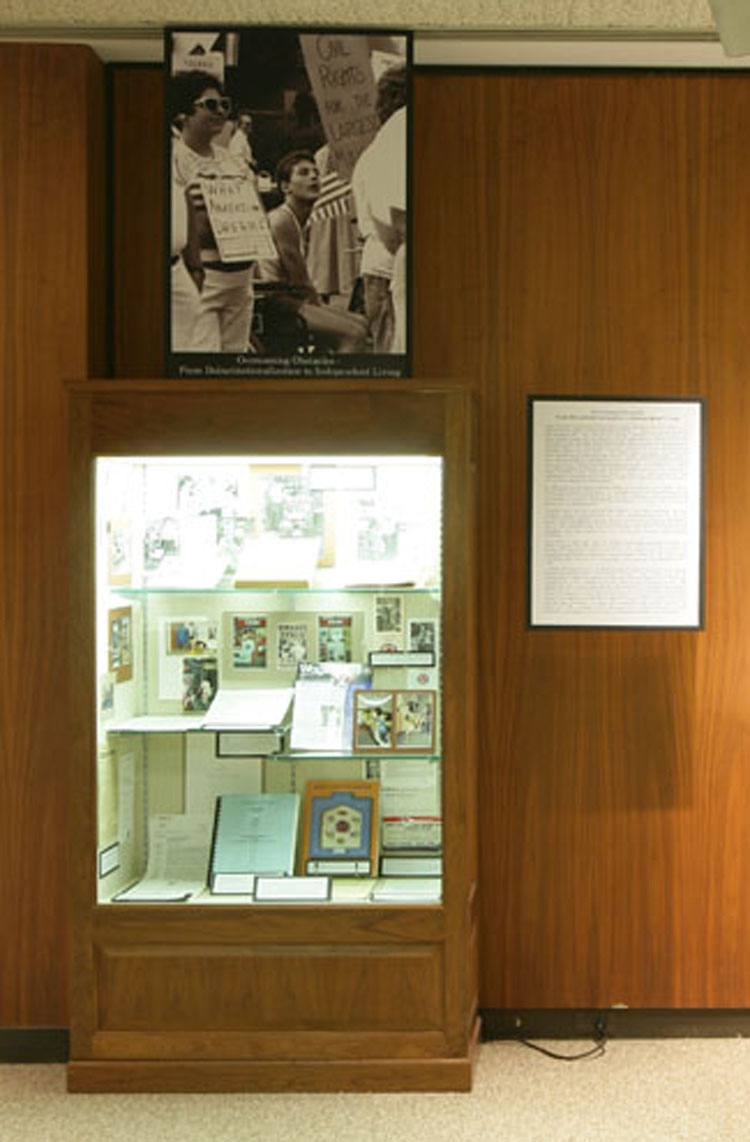
Overcoming Obstacles—From Deinstitutionalization to Independent Living.
After centuries of being locked behind doors in huge institutions, the way society treated disabled people began to change following World War II. There are several reasons for this paradigm shift. First, the post-war vocational rehabilitation programs meant that some disabled people had the resources to live independently. Second, the parents’ movement of the mid-1950s advocated for public school education for developmentally disabled children over institutional care, which opened doors for the integration of all disabled children into local schools. Third, improvements in medical care meant that many disabled people lived longer than formerly possible, and political leaders sought to move disabled people to independence so they would not rely on government support their entire lives. Fourth, deinstitutionalization as a policy of the government emptied out large custodial institutions, and returned disabled persons to their communities. Lastly, disabled people themselves began to speak out and advocate for their independence, demanding access to public services, the removal of architectural barriers, and an end to employment discrimination.
In 1963, polio survivor Hugh Gallagher worked as an assistant in the office of Alaska Senator Bob Bartlett in Washington, D.C. Gallagher found many federal buildings to be inaccessible, so he drafted legislation that required all buildings built with federal funds be accessible to everyone, which Bartlett introduced to Congress. The Architectural Barriers Act of 1968 became law.
Disability rights activists continued their efforts to gain legal protection. In 1973, Congress passed the Rehabilitation Act, which included Section 504, the most far-reaching disability legislation to date because it promised civil rights for the disabled. But the Carter administration delayed the issuance of regulations related to Section 504, and in 1977, disability leaders led vocal demonstrations against the administration, including a sit-in that lasted 25 days. This protest united disability rights advocates nationally.
Many efforts to gain equal rights for disabled people were organized by activists on college campuses who used methods employed in the 1960s by Civil Rights leaders and Vietnam War protestors. Among these activists was college student Ed Roberts, who started the movement for independent living in Berkley, California. All of these efforts of disability rights activists led to the passage of the Americans with Disabilities Act in 1990.
In Toledo, the Toledo Society of Crippled Children changed its mission in 1974 to include services for disabled adults, and changed its name to the Toledo Society for the Handicapped to reflect this mission. Land was purchased on Monroe Street in Sylvania Township for a new building to provide comprehensive disability services. The organization also became more activist, and advocated for improved transportation services and the removal of architectural barriers. In 1988, the organization became a Center for Independent Living, and the following year, it changed its name to the Ability Center. The organization sued UT in 1989 over access to new fraternity and sorority housing being constructed on campus, and eventually settled with the university. In many ways, UT’s experience was a microcosm of the issues confronted by many institutions and organizations in meeting the independence needs of disabled people.